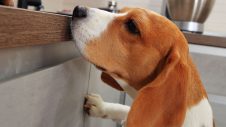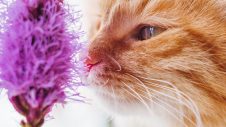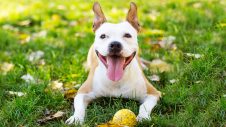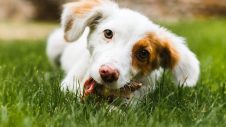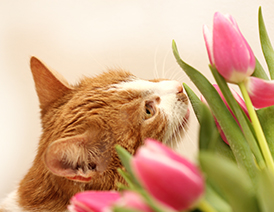 There are many household items that can be toxic for your pets, and it’s important to know what they are and what to do if your pet ingests one.
There are many household items that can be toxic for your pets, and it’s important to know what they are and what to do if your pet ingests one.From your leftover chocolate dessert to your packet of painkillers, an average household contains many everyday items that are suitable for human consumption, but can be harmful to pets. And, of course, there are items that shouldn’t be consumed by human or animal, like batteries and rat poison.
‘It just takes one second to put a handbag down or leave a cupboard open and it’s gone,’ says Dr Adam Sternberg, Veterinary Director, Greencross Vets Brookvale. ‘Dogs in particular are incredibly curious, quick, and sneaky.’
What household items are poisonous to your pet?
- drugs and medication (eg, Nurofen, Ibuprofen, Panadol, Ventolin)
- foods including chocolate, onion, garlic, raisins, grapes, sultanas
- nuts, including macadamia nuts
- detergents
- toxins and poisons, eg., rat poison, snail bait
- certain plants and flowers, eg., lilies, azaleas, lavender, ‘nightshade’ plants, and more
The common culprits
Dr Adam says it’s common to see pets that have ingested painkillers such as Panadol and Nurofen, especially in cats. This can have a long-term detrimental impact, the severity of which many people underestimate.
‘I had a client who thought their cat had a headache and gave it Panadol. Unfortunately, the cat died,’ he says. ‘The metabolic pathways in a cat or dog are totally different to a human.’
Other drugs, prescription and illicit, are becoming increasingly common.
‘We’re starting to see the ingestion of human anti-anxiety, anti-psychotic medications as well, like Prozac and sleeping tablets. We see the odd dog who has ingested illicit substances like marijuana. We also see things like Ventolin, when they pierce the container of those asthma-type puffers.’
Dr Adam says chewing gum, play dough, and chocolate are also common culprits. The garden can also pose threats to cats and dogs, with certain plants and flowers being toxic.
And while it’s tempting to want to spoil your pet with leftovers from dinner, Dr Adam cautions against it. ‘We had a dog that came in who ate the entire drippings off a lamb tray which was full of fat. We made this dog vomit, and it would have become incredibly sick if it had been allowed to keep that in their stomach.’
Overall advice to owners
Dr Adam says the best way to identify and address risk factors is to think of a pet like a baby, then prepare the space accordingly.
‘Imagine you have a toddler,’ he says. ‘Anything that the toddler can get into, a dog, or less commonly a cat, can get into as well.’
Dr Adam says the best source of information is a vet, so take your questions to your local vets rather than searching online.
What to do if a pet ingests something harmful
- always call your nearest vet first and let them know what’s happened
- try to keep a sample of what was swallowed so the vet can identify the active ingredient
- the sooner you get them to a vet, the better
- it’s best for a vet to induce vomiting within the hour
- never try to induce vomiting at home
If you know or suspect your pet has swallowed a poisonous item, call your local Greencross Vets immediately.

 Greencross Vets
Greencross Vets 